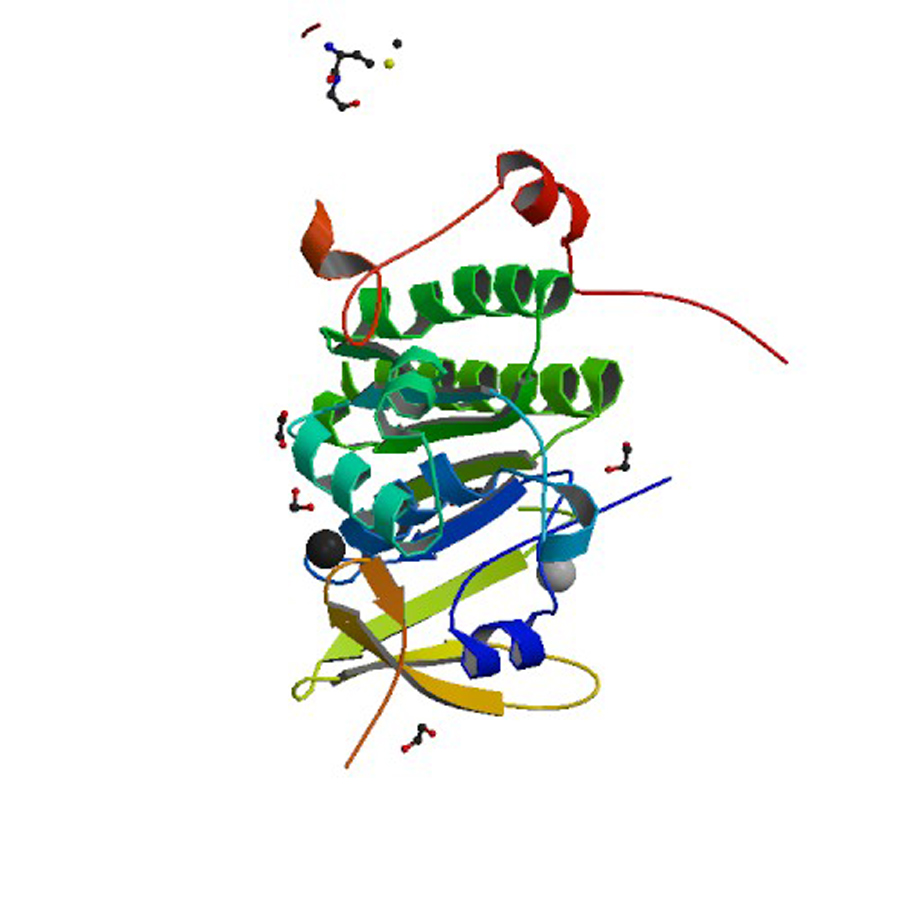Establishing the first set of guidelines for breast cancer management in Bosnia and Herzegovina
Breast cancer is the most common cancer in women worldwide. Specialised centres that monitor breast cancer patients can help improve disease outcomes by recording patient information and by helping to implement centralised guidelines for disease management. In Bosnia and Herzegovina there is no accurate data on breast cancer patients, nor any centralised guidelines. Dr Lejla Hadžikadić-Gušić, a breast surgical oncologist, of the Department of Surgical Oncology at the Atrium Health Levine Cancer Institute, USA, led a team of specialists that took on the major task of creating the first multidisciplinary guidelines for the management of breast cancer in Bosnia and Herzegovina.
Breast cancer is the most common cancer among women globally, responsible for approximately 685,000 deaths a year. The main specialities involved in the management of breast cancer are medical oncology, which deals with systemic treatments such as chemotherapy, immunotherapy, and endocrine therapy; surgery; and radiotherapy, which uses high-energy rays or particles that destroy cancer cells to treat, shrink, or prevent breast cancer from coming back. A multidisciplinary team approach is the cornerstone of breast cancer care. The intersection of all three disciplines relies on the available breast cancer information in a population. According to the National Comprehensive Cancer Network (NCCN) guidelines, institutions that monitor breast cancer patients can offer optimal treatment options. In some countries though, including Bosnia and Herzegovina (B&H), there is no accurate data on breast cancer patients, treatments, or deaths, mainly because of the lack of a central registry to collect such information.
The multidisciplinary consortium
In 2021, the annual Bosnian-Herzegovinian American Academy of Arts and Sciences (BHAAAS) conference took place in Mostar, B&H. A roundtable of specialists from B&H and the diaspora was held as part of this conference and coordinated by Dr Lejla Hadžikadić-Gušić of the Department of Surgical Oncology at the Atrium Health Levine Cancer Institute, USA. Many breast cancer specialists took part in a consortium formed with the aim to create the first set of guidelines for the management of breast cancer in B&H. The process was evidence-based and took each speciality into account. The team also considered local circumstances and available resources, including patients’ access to health institutions and available treatments. Finally, all involved specialists agreed and approved the guidelines created at the 2021 consortium. These guidelines included instructions and recommendations for each relevant speciality including radiology, pathology, genetics, surgery, oncology, and radiotherapy.

Photo credit: Emw, CC BY-SA 3.0, via Wikimedia Commons
Timely diagnosis is crucial
When it comes to imaging required for breast cancer screening, the team strongly recommends a mammogram for all women over 40, while an earlier test should be considered for women who have a family member with breast cancer.
When an abnormality is found on a screening mammogram, the researchers advise that this gets investigated by performing extra imaging such as a diagnostic mammogram including an ultrasound scan, and/or MRI and needle biopsies (taking tissue samples for examination under the microscope using a needle) of any breast or axillary abnormalities. Although not currently performed in all centres in B&H, marking the tumour before surgery by inserting a guide wire is also strongly recommended. The team states that all tests should be completed within a month from the initial findings and that all patients should go through a multidisciplinary team meeting where their further management will be decided.

Photo credit: Emw, CC BY-SA 3.0, via Wikimedia Commons
For women with a high risk of breast cancer (>20% lifelong risk) the use of MRI and mammography alternately every six months is recommended. The use of MRI is also proposed for women that are found to carry a genetic mutation or gene variants that increase the lifetime risk of developing breast cancer.
A clear prognosis is key
Pathology is the medical speciality that enables the diagnosis of diseases by analysing tissue samples. The recommendations regarding this specific field include testing all cancerous growths for oestrogen (ER) and progesterone receptors (PR) as well as for Her2 receptors on the tumour tissue (indicating that the tumour may grow faster), and including the grade of the cancer in the final report. They also strongly advise that the pathology report is not delayed more than ten days after the specimen gets sent to the lab and that all reporting centres use the latest standards for the classification of the disease based on current American Joint Committee on Cancer (AJCC) standards. Residual cancer burden class (RCB) reporting is also critically important for prognostic evaluation.
A multidisciplinary approach usually offers higher chances that the cancer does not return.The team also recommended genetic testing for all patients that were of high risk for breast cancer, including a test for breast cancer genes such as, but not limited to, BRACA-1/BRACA-2. More specifically, they defined as high risk any woman who either has a personal or family history of breast or ovarian cancer before the age of 40, or individuals that have multiple cancers, cancers at a young age, or any other cancer associated with the BRCA1/BRCA2 or other genes in a member of their family. When available, genetic testing should be initiated and followed by genetic counselling to discuss the necessity and meaning of the results of the tests with the patient and their families, as well as their options.
Optimising breast cancer treatment
Breast cancer can, in most cases, be treated with surgery, which may be followed by chemotherapy (adjuvant chemotherapy), radiation therapy, or all three. A multidisciplinary approach usually offers higher chances of survival and lower chances of recurrence ie, that the tumour does not return. To remove the cancer from the breast, the surgeon either removes the whole affected breast (mastectomy) or just the tumour (lumpectomy), in addition to axillary surgery with either a sentinel lymph node biopsy (which is recommended and preferred where available) or with the removal of all the axilla nodes (axillary dissection). The team recommends that, where possible, surgeons should try to preserve the breast, especially since there is no evidence that a more aggressive surgical approach improves survival rates, while preserving the breasts can have a positive effect on the patients’ wellbeing and body image. The team also advises that surgeons should consider bilateral mastectomies and immediate reconstruction of the breasts by a plastic surgeon for women that have a genetic breast cancer mutation.

When it comes to investigating the possible spread of the disease to the axilla in patients with no obvious node involvement that go for surgery, the team recommends a sentinel lymph biopsy with the use of two different dyes to identify any cancer tissue in the axillary nodes. The removal and testing of at least three nodes improves the sensitivity of the test and if the results are positive for cancer tissue, the surgeon will discuss the need to proceed to axilla clearance ie, axillary dissection with the multidisciplinary team, as well as the patient, for a patient-centric approach.
The use of chemotherapy
Undergoing chemotherapy before definitive oncologic surgery can lower the stage of the disease by shrinking the tumour itself and in some cases by eliminating some foci of disease in the lymph nodes. This often allows the surgeon to perform less aggressive surgery such as a lumpectomy rather than a mastectomy and, in some cases, can help the women avoid an axillary clearance (dissection) and all the associated risks that accompany that surgery such as lymphoedema. The team recommends consideration of neoadjuvant chemotherapy for women with palpable tumours over 2cm in size, women with triple-negative breast cancer (cancer that has tested negative for ER, PR and Her2 receptors) and women with Her2 positive breast cancer or women with biopsy proven nodal involvement. The requirements for adjuvant systemic therapy depend on the pathology results of the surgical specimen. Further specialised molecular tests (such as Oncotype Dx, MammaPrint) are encouraged for oestrogen positive tumours if the financial circumstances permit to aid in decision making for the need for chemotherapy. The team also strongly advises that Tamoxifen or an aromatase inhibitor should be taken by women with ER positive disease. Immunotherapy agents should be considered where appropriate and available for use.
Dr Hadžikadić-Gušić and collaborators aim to help the Ministry of Health identify any system deficiencies and confidently provide the resources and services required.In the case that breast cancer has spread beyond the breast and axilla (metastatic disease), some of the consortium’s recommendations include the administration of single or dual therapies with Pertuzumab for Her2 positive cancers, hormone therapy for hormone positive cancers, and chemotherapy for triple negative breast cancers. It is proposed that these women also get tested for PD-L1 protein, a test that indicates what type of chemotherapy regimen is effective. For these treatments, the team strongly advocates considering the availability of referral of the patient to a centre with access to clinical trials.
Radiotherapy after surgery can also reduce the chances of recurrence or the cancer coming back. The experts advise that women undergoing breast conservation surgery should be offered adjuvant radiotherapy. After mastectomy, radiotherapy should be administered for node positive disease, positive resection margins and high-risk disease, ideally within 4–6 weeks from surgery.

With the above evidence-based recommendations and available regional resources taken in mind, the consortium specialists aimed to create the first set of national guidelines for the management of breast cancer in B&H. For these to be put to good use, they also strongly propose the establishment of a central registry. The registry will be responsible for monitoring and filing data for each patient, a process that has been previously shown to help optimise patient care and treatment outcomes. Through their research, Hadžikadić-Gušić and colleagues aim to support breast cancer healthcare providers nationwide and help the Ministry of Health identify any system deficiencies. In this way, they hope to confidently provide the resources and services required to raise the standards of care for patients with breast cancer in B&H.
Personal Response
How do you aim to ensure that your recommendations become embedded in practice for national guidelines? Would the consortium be willing to participate in an effort to establish a central registry for breast cancer in B&H and what would that involve?We are currently working on a shortened, itemised version of these guidelines to present to individual hospitals as well as the Ministry of Health. We hope that the Ministry of Health will adopt these guidelines so that we can start the process of widespread use and adoption. The consortium would certainly be willing to participate in an effort to establish a central registry for breast cancer in B&H. I am actually currently involved in a pilot programme to test a central registry in one hospital system in B&H. With the support of the Levine Cancer Institute and Atrium Health and financial support from the Bosnian Medical Education Fund, I am hopeful that results from this pilot programme will yield positive baseline data that supports the use of widespread implementation of a central cancer registry.